How a blind photographer sees the world
- Published
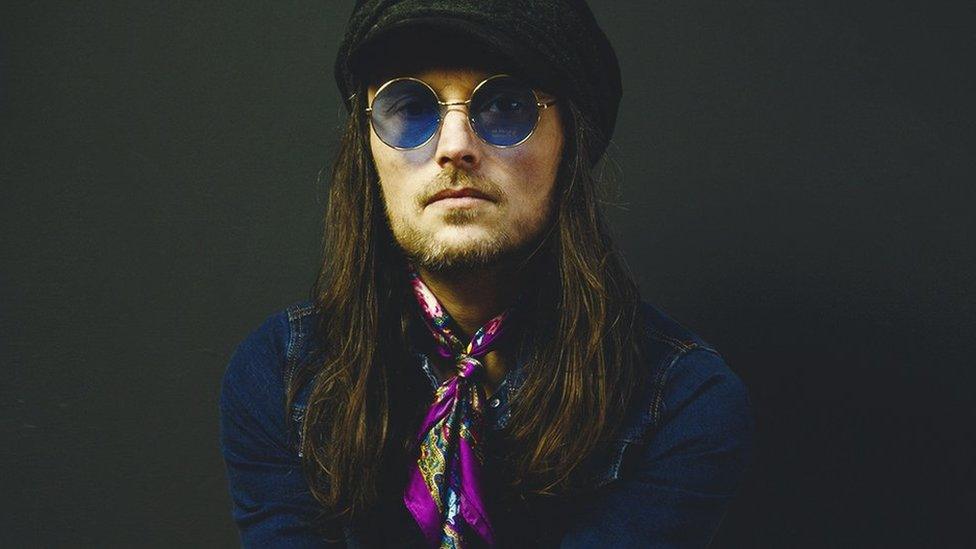
Ian Treherne was born profoundly deaf but only started going blind at the age of 15
Ian Treherne sets up his camera with painstaking precision. The shutter clicks and he senses he has got the shot he wants. Despite being almost completely blind, he says he sees things that other people do not.
"I see past things. I have always been an observer, an outsider looking in, but that helps me in photography."
He was born profoundly deaf and wears hearing aids, but only started to lose his vision as a teenager. Aged 15, Treherne realised he couldn't see as well as his friends. An optician sent him to hospital, where a consultant broke the news he would gradually grow blind due to a rare genetic condition called Usher syndrome.
"Since that day, I have had to deal with it by myself. I have put a lot of pressure on myself to fulfil my goals and dreams," the 41-year-old says.
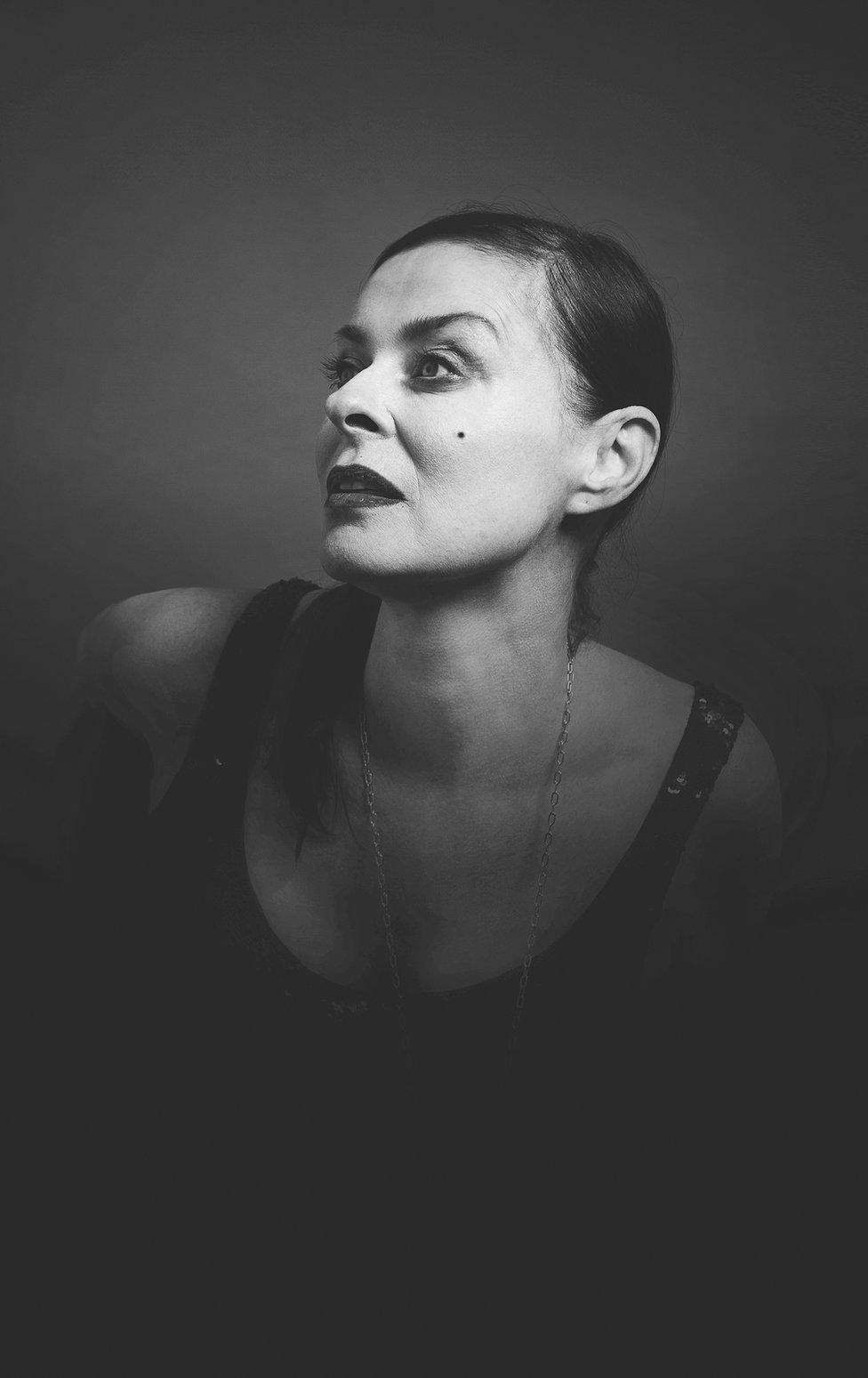
Singer-songwriter Lisa Stansfield is one of the subjects of Treherne's portrait photography

Over the following decades, he lost 95% of his vision, leaving him with just a tiny window of sight. But for most of that time, Treherne kept his blindness a secret.
"I have been hiding it for most of my life. I wasn't ready to grasp that identity as a blind person. It has been a very difficult transition for me.
"From a young age I have felt different, I've been an outcast. I've always had lots of friends but you can feel so isolated as a blind person."
The photographer, who lives on his own in Rochford, Essex, says he became reclusive as he got older.
After losing his job in the sign printing industry due to his deteriorating sight, "everything fell apart" and he had a mental breakdown.
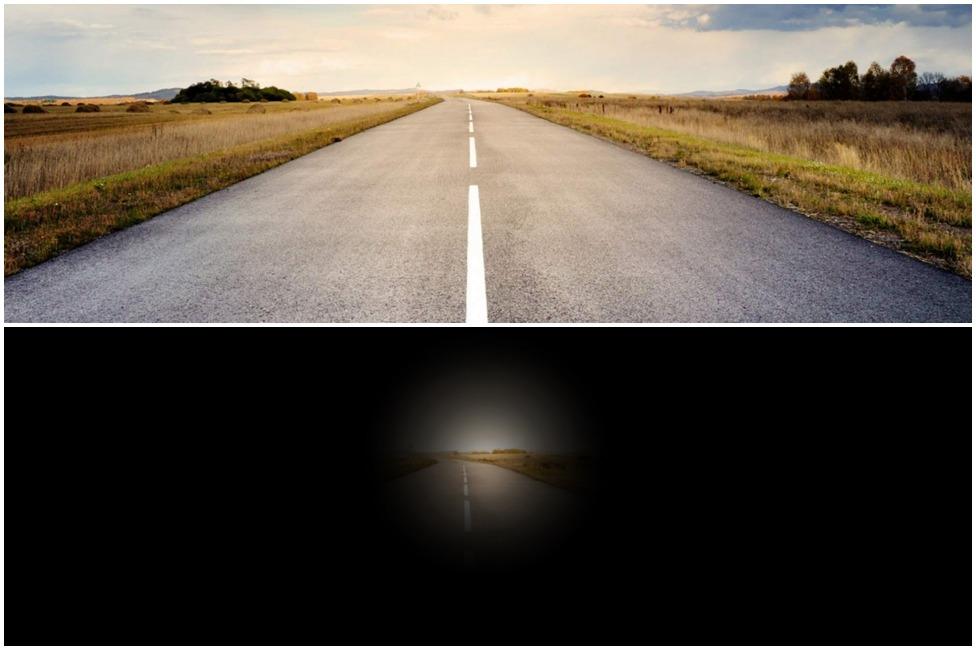
Treherne's window of vision is demonstrated in this representation of his eyesight
A few years ago he decided to start being more open about his blindness.
"It was too hard trying to act normal, it was making me so anxious, but I've turned that around," he says.
"I've come a long way and I have a different outlook on my blindness now."
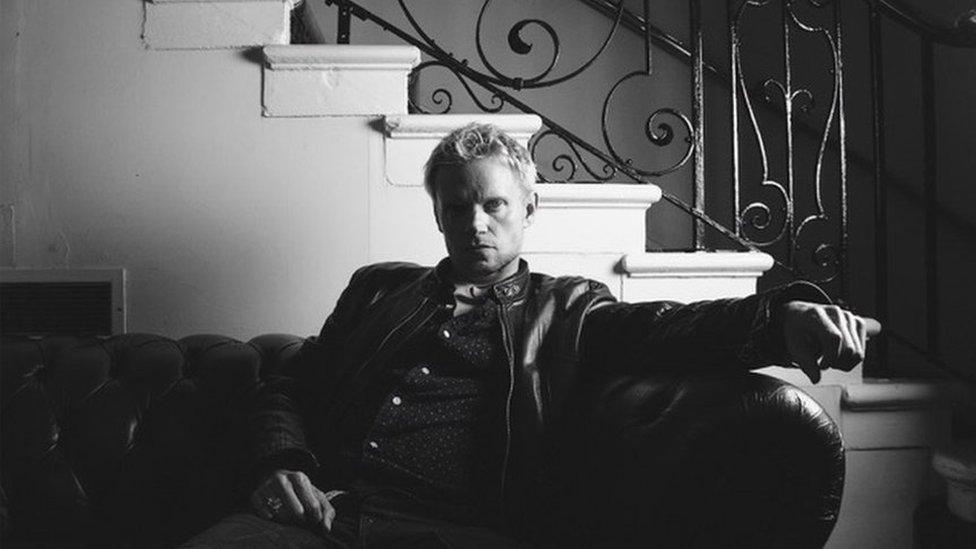
Actor Marc Warren, the star of Hustle and Mad Dogs, as photographed by Treherne
Growing up, he was interested in sketching and imagery, but only started taking photography seriously in the past decade and is now trying to make a living from it.
"It is a massive creative outlet for me, it allows me to participate in the world and connect with people," he says.
"People often come to me at a difficult time in their lives where they are looking for something to change. It never ceases to surprise me that we do the shoot and then something amazing happens in their life. I like boosting their confidence."
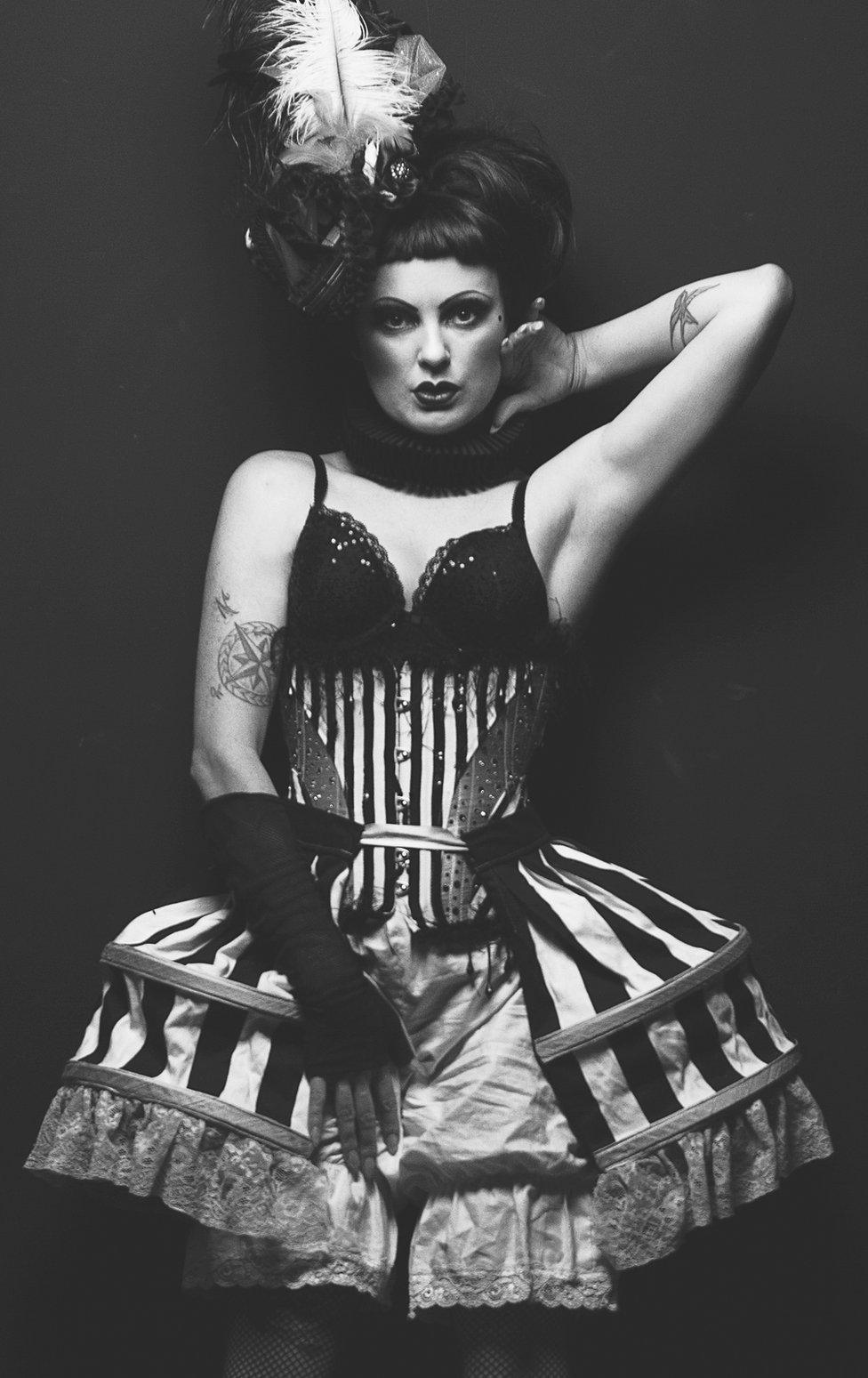
Burlesque dancer and cabaret singer Lili la Scala, who grew up near Treherne in Southend

Completely self-taught, Treherne is influenced by photographers David Bailey and John French - and also by his blindness. With their dark peripheries, his black and white portraits "mimic" his eye condition.
"I'm not going to lie, it is extremely difficult for me," he says. "It is insanely hard working with this tiny window of sight.
"There are shoots I can't do but I don't know any other way and I just utilise what I've got left. I've never had an assistant, I have done it the hard way."
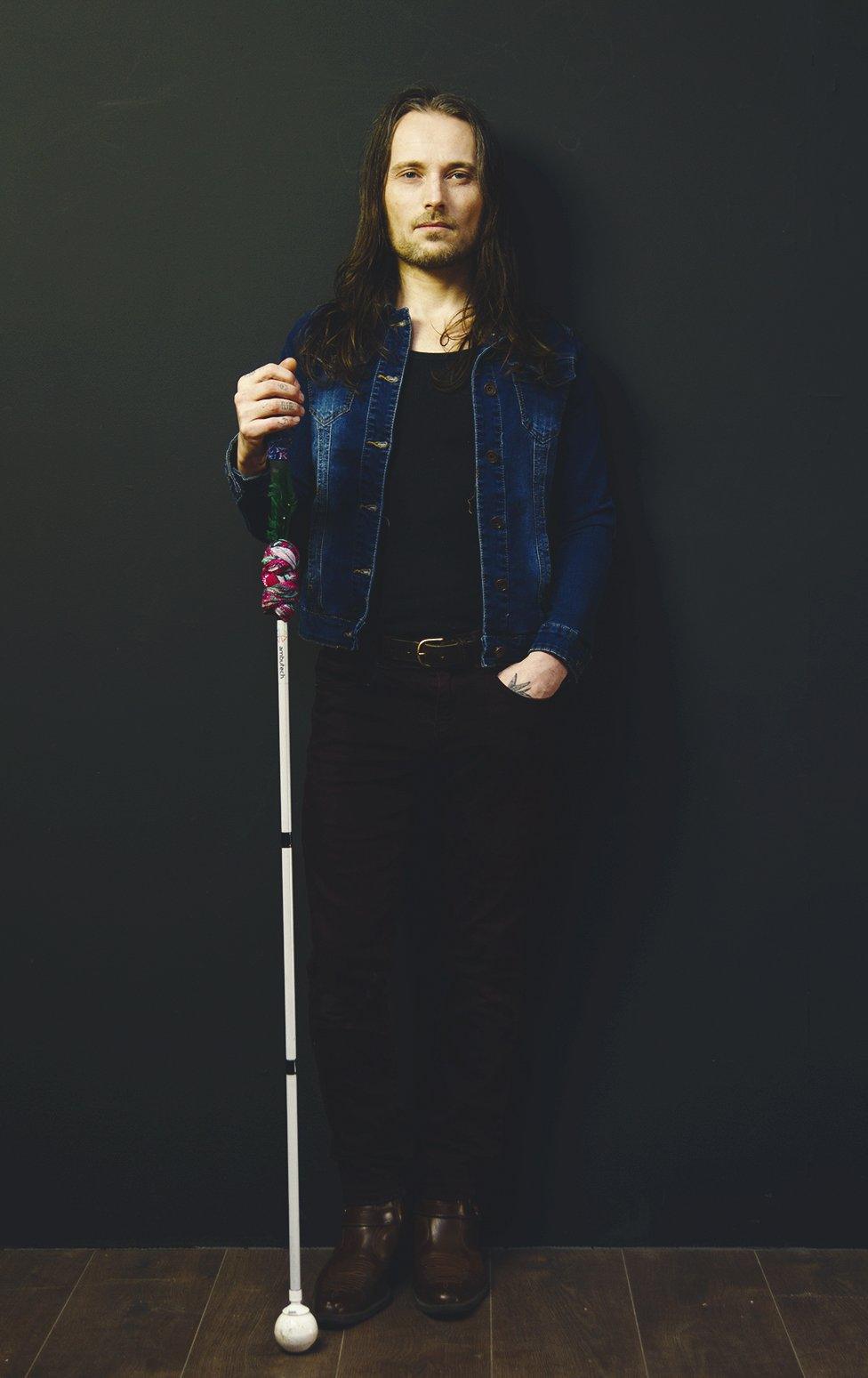
He has recently started using a white cane after years of resisting it

Last year, doctors said his eyesight had got significantly worse but Treherne was "grateful and happy" to learn he would keep the remaining 5% of his vision.
"My view of the world is already cropped, but I have such a strong desire to see.
"My blindness has spurred me on to achieve more and focus more."
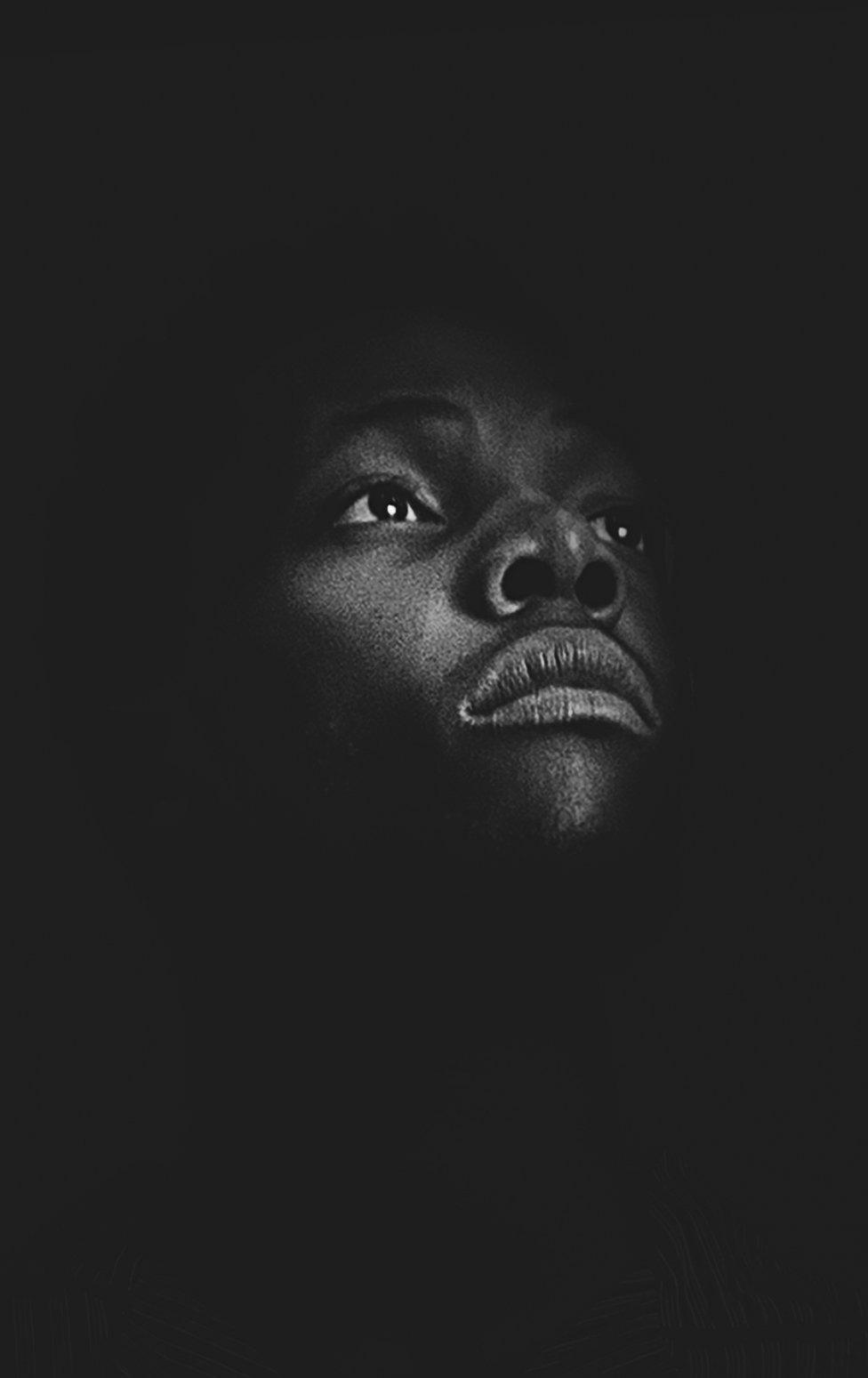
Actor Simi Egbejumi-David had his portrait taken while starring in a play about multiple sclerosis

Treherne, who also paints, makes films and plays music, only recently started using a cane.
He says he refused to carry one for years due to "male pride" and feeling like it was "a sign of weakness".
Now he wants to make blind people more visible to the public.

A homeless woman begging for money in Berlin

This shot was captured during a protest in Trafalgar Square
"We are on the cusp of change but you rarely see a blind person on television unless it's about their condition. They're always completely blind and usually old and helpless.
"I want to change that. I really want to make the cane cool and I've brightened mine up with bandanas.
"I don't want to hide any more."
All photography subject to copyright